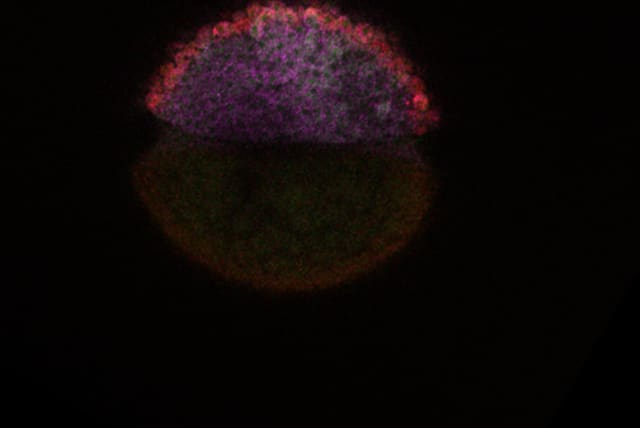Hebrew University decodes mRNA’s role in embryo formation using zebrafish - study

Senior author Rabani commented, “Our work opens up new avenues for understanding the molecular mechanisms underlying cell fate determination during embryonic development.”
Even non-scientific Israelis recognize the term “mRNA” (messenger RNA) from the COVID-19 vaccines that they allowed nurses to inject many times into their arms. Molecular biologists refer to mRNA as a one-stranded molecule of RNA that expresses the genetic sequence of a gene and is read by a ribosome, which reads the mRNA sequence and translates the genetic code into a string of amino acids that develop into long ones that fold to form proteins.
Now, a new study at the Hebrew University in Jerusalem (HU) presents insights into mRNA regulation during embryonic development. The study combines single-cell RNA-Seq and metabolic labeling in zebrafish – lovely, striped aquarium fish that are transparent, and because of their completely sequenced genome, rapid fertility, and development, they are often used as a model animal for biomedical research, including on human disorders and biological processes.
They published their important paper in the prestigious journal Nature under the title “Cell-type-specific mRNA transcription and degradation kinetics in zebrafish embryogenesis from metabolically labeled single-cell RNA-seq.”
Unique insights
This approach quantifies mRNA transcription and degradation rates within individual cell types, uncovering varied regulatory rates across genes and cell-type-specific differences in degradation. Understanding mRNA regulation during embryonic development, noted the researchers, helps to understand how genes are turned on and off in specific cells at precise times, informing our understanding of development, cell fate decisions, and potential applications in medicine and biology.
The research was led by doctoral student Lior Fishman and team under the guidance of researcher Dr. Michal Rabani from the Silberman Institute of Life Science and in collaboration with researchers from the US National Institutes of Health. It describes the intricate process of mRNA regulation during embryonic development and provides unique insights into how pluripotent cells capable of giving rise to several different cell types adopt specialized identities through gene expression.
They explained that embryonic development involves pluripotent cells assuming specialized identities by adopting particular gene expression profiles bu understanding the relative contributions of mRNA transcription and degradation to shaping these profiles has been challenging, particularly within embryos with diverse cellular identities.
Technique researchers used
In the study, researchers used a technique called single-cell RNA sequencing along with metabolic labeling to track how genes are turned on and off over time in zebrafish embryos. They could tell apart the mRNA that was made from the embryo itself and the mRNA that was already there, from the mother. Using mathematical models, they measured how fast genes were turned on and off in different types of cells as they developed.
The results of the study reveal highly varied regulatory rates across thousands of genes. The researchers observed coordinated transcription and destruction rates for many transcripts and linked differences in degradation to specific sequence elements. Importantly, they identified cell-type-specific differences in degradation, including selective retention of maternal transcripts within primordial germ cells and enveloping layer cells, two of the earliest specified cell types.
Senior author Rabani commented that “our work opens up new avenues for understanding the molecular mechanisms underlying cell fate determination during embryonic development.” They hope that their work will pave the way for future studies aimed at unraveling the complexities of gene expression regulation in various biological contexts.
Jerusalem Post Store
`; document.getElementById("linkPremium").innerHTML = cont; var divWithLink = document.getElementById("premium-link"); if (divWithLink !== null && divWithLink !== 'undefined') { divWithLink.style.border = "solid 1px #cb0f3e"; divWithLink.style.textAlign = "center"; divWithLink.style.marginBottom = "15px"; divWithLink.style.marginTop = "15px"; divWithLink.style.width = "100%"; divWithLink.style.backgroundColor = "#122952"; divWithLink.style.color = "#ffffff"; divWithLink.style.lineHeight = "1.5"; } } (function (v, i) { });

